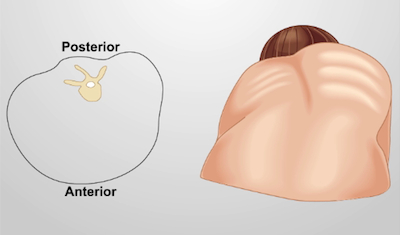Exploración pulmonar I: inspección y palpación
Visión general
Fuente: Contactar Dhand, MD, médico, medicina interna, Beth Israel Deaconess Medical Center de asistir
Trastornos del sistema respiratorio con una principal queja de falta de aire se encuentran entre las razones más comunes para la evaluación de pacientes hospitalizados y ambulatorios. La pista visible más obvia a un problema respiratorio será si el paciente muestra cualquier signo de dificultad respiratoria, tales como la frecuencia respiratoria rápida o cianosis. En una situación clínica, esto requerirá siempre emergente atención y oxígeno terapia.
A diferencia de patología en otros sistemas del cuerpo, muchas enfermedades pulmonares, incluyendo enfermedad pulmonar obstructiva crónica (EPOC), asma y neumonía, se pueden diagnosticar por la examinación clínica cuidadosa solo. Esto comienza con una completa inspección y palpación. Tenga en cuenta que en situaciones de emergencia no la historia del paciente completa habrá sido ya tomada, gana la penetración importante en historias de exposición (p. ej., fumar), que podría dar lugar a enfermedades pulmonares específicas. Esta historia puede entonces confirmar hallazgos físicos como se realiza el examen.
Procedimiento
1. preparación para el examen
- Antes de examinar al paciente, lávese las manos con agua y jabón o limpie con lavado antibacteriano.
- Explicar al paciente que va a realizar un examen pulmonar.
2. colocación del paciente
- Asegúrese de que el paciente está desnudo hasta la cintura (mujeres guardando en ropa interior y exponer cada hemitórax uno a la vez).
- Coloque al paciente en la mesa de examen en un ángulo de 30 a 45 grados y abordar al paciente d
Aplicación y resumen
Ante todo buscar signos de dificultad respiratoria en un patrón de respiración del paciente y único. Enfermedades pulmonares subyacentes graves a menudo será evidentes simplemente echando un vistazo a los pacientes. Condiciones tales como EPOC y enfisema pueden revelarse en aspecto y habitus del cuerpo del paciente. Estos pacientes se pueden clasificar libremente como "sopladores rosados" o "bloaters azul." "Pink Puffer" es generalmente delgados y enfisema. Tener un pecho hiper inflad...
Saltar a...
Vídeos de esta colección:

Now Playing
Exploración pulmonar I: inspección y palpación
Physical Examinations I
157.2K Vistas

Abordaje general para la exploración física
Physical Examinations I
117.4K Vistas

Observación e inspección
Physical Examinations I
94.8K Vistas

Palpación
Physical Examinations I
84.2K Vistas

Percusión
Physical Examinations I
101.4K Vistas

Auscultación
Physical Examinations I
61.9K Vistas

Ajuste adecuado de la vestimenta del paciente durante el exploración física
Physical Examinations I
83.4K Vistas

Medición de la presión arterial
Physical Examinations I
108.4K Vistas

Medición de los signos vitales
Physical Examinations I
114.7K Vistas

Exploración pulmonar II: Percusión y auscultació
Physical Examinations I
212.8K Vistas

Exploración cardiovascular I: Inspección y palpación
Physical Examinations I
176.5K Vistas

Exploración cardiovascular II: Auscultación
Physical Examinations I
139.9K Vistas

Exploración cardiovascular III: Ruidos cardíacos anormales
Physical Examinations I
91.8K Vistas

Exploración vascular periférica
Physical Examinations I
68.6K Vistas

Exploración vascular periférica con un Doppler de onda continua
Physical Examinations I
38.6K Vistas
ACERCA DE JoVE
Copyright © 2025 MyJoVE Corporation. Todos los derechos reservados




